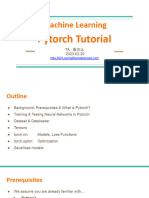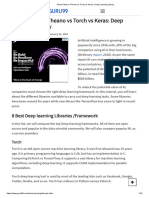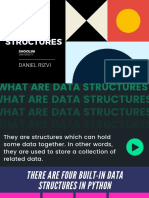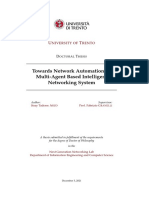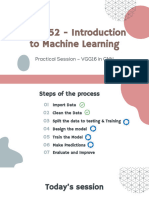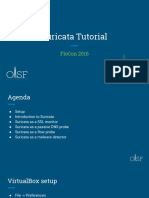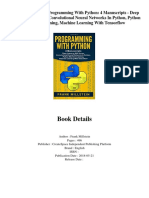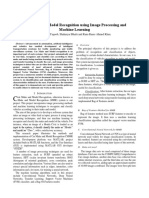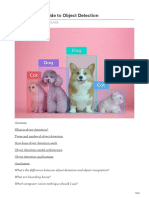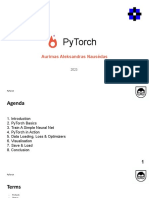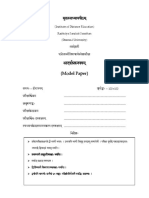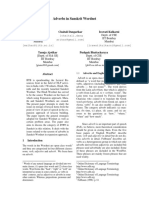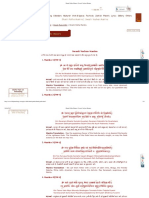0% found this document useful (0 votes)
167 views31 pagesPyTorch for Deep Learning Beginners
Pytorch is a deep learning library developed by Facebook. It provides tensors for efficient GPU computation and neural networks built on an automatic differentiation system. Pytorch allows users to easily define neural networks by organizing layers as a sequence. Networks can then be trained using optimizers and loss functions to update parameters through backpropagation. Pytorch offers flexibility through its dynamic computational graph and is well integrated with GPU acceleration and common deep learning components.
Uploaded by
ShashankCopyright
© © All Rights Reserved
We take content rights seriously. If you suspect this is your content, claim it here.
Available Formats
Download as PDF, TXT or read online on Scribd
0% found this document useful (0 votes)
167 views31 pagesPyTorch for Deep Learning Beginners
Pytorch is a deep learning library developed by Facebook. It provides tensors for efficient GPU computation and neural networks built on an automatic differentiation system. Pytorch allows users to easily define neural networks by organizing layers as a sequence. Networks can then be trained using optimizers and loss functions to update parameters through backpropagation. Pytorch offers flexibility through its dynamic computational graph and is well integrated with GPU acceleration and common deep learning components.
Uploaded by
ShashankCopyright
© © All Rights Reserved
We take content rights seriously. If you suspect this is your content, claim it here.
Available Formats
Download as PDF, TXT or read online on Scribd
/ 31
